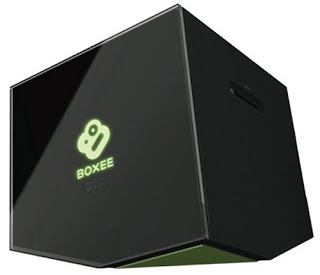I’m less interested in the Apple iPad and the spate of other interactive tablet devices about to flood into the consumer marketplace than in what they represent: another in a long line of attempts to semi-privatize the Internet.
 Most “device revolutions” fail. For every iPod there are scores of Nomad Jukeboxes (of which I was a proud and happy early adopter). But this new revolution just might succeed, because it’s not about the devices; it’s about the consumer behavior impelling their invention. And it’s that real – or presumed – consumer behavior that’s generating a proliferation of not-so-secret gardens on the Web, many of them device-based – a phenomenon Forrester’s Josh Bernoff calls the “Splinternet.” Don’t look now, but your television, telephone, radio, TiVo, cable box, and even your desktop PC are or are about to become gated intranets – with significant implications for marketers, media and agencies.
Most “device revolutions” fail. For every iPod there are scores of Nomad Jukeboxes (of which I was a proud and happy early adopter). But this new revolution just might succeed, because it’s not about the devices; it’s about the consumer behavior impelling their invention. And it’s that real – or presumed – consumer behavior that’s generating a proliferation of not-so-secret gardens on the Web, many of them device-based – a phenomenon Forrester’s Josh Bernoff calls the “Splinternet.” Don’t look now, but your television, telephone, radio, TiVo, cable box, and even your desktop PC are or are about to become gated intranets – with significant implications for marketers, media and agencies.
The biggest issue is complexity – the bogeyman that has haunted marketing and advertising from the dawn of the ad-supported Web. Publishers are waxing hopeful that the iPad will resolve the challenges that have seen their businesses sundered; weeks before its launch, The New York Times’s David Carr even labeled Apple’s device a “savior,” arguing that it “represents an opportunity to renew the romance between printed material and consumer.” Yet it’s that very romantic impulse that should serve as warning that a pre-nup is needed, for without continuing, concerted, cross-industry commitment to managing transactional complexity in the marketing-media supply chain, the iPad and its ilk might only make publishers’ problems worse.
Portal Period
The semi-privatization of the Internet has been creeping up on us for a long time – almost as long as the Web has existed, in fact, and so-called portals attempted to become the controlling influence over consumers’ surfing habits. The portal period is generally considered a failure — sort of the Paleozoic Era of the Internet — but that’s unfair. Rather, the first decade-and-a-half of the Web’s gestation were largely about its proliferation and diversity, with consumers seeking navigation through an unfamiliar maze. That made search engines more valuable than portals.
But the walled gardens have always been there, and they’ve been growing in influence. What are Facebookand Twitter, after all, if not gated communities, built on Internet Protocol (IP), that live within the confines of the larger Web? While they’re generously forgiving fenced neighborhoods (anyone can move in, regardless of race, creed, color, or brand preference), they are walled gardens nonetheless. They have their own rules and regulations, codes of conduct, behaviors, mannerisms and lingo. To identify them with the vague techie term “platforms” obscures what they really are: private communities, like cooperative apartment buildings in the big city. They allow you access to the larger, opportunity-laden and riskier world outside, but you’ll always have your safe haven to return to.
 Changing metaphors, if the Web is a “cesspool,” as Google CEO Eric Schmidt has famously put it, maybe these are country club swimming pools – bacteria-free places to swim with your own kind. But – and this is important – however removed these country clubs were from the cesspools, they were still part of the larger town. The waste water still flowed to the same place. The kids may have been richer and snootier than you, but they went to the local public school. The same has been true with the Web’s country club pools – until now.
Changing metaphors, if the Web is a “cesspool,” as Google CEO Eric Schmidt has famously put it, maybe these are country club swimming pools – bacteria-free places to swim with your own kind. But – and this is important – however removed these country clubs were from the cesspools, they were still part of the larger town. The waste water still flowed to the same place. The kids may have been richer and snootier than you, but they went to the local public school. The same has been true with the Web’s country club pools – until now.
Although the new IP-fueled devices promise to infuse interactivity into the last remaining analog nooks and crannies of our daily lives, the communities guarded by them threaten to upend that earlier, comfortable symbiosis. These devices and their proprietors have the ability to lock the community gates much tighter – or, at least, make the community so self-contained that any impulse to leave is restrained. They take the dogma that still guides so many digerati – “information wants to be free” – and reveal it as little more than a silly, thoughtless mantra.
Amazon’s World
While the iPhone, with its “apps economy,”, is the readiest example of these device-based walled gardens, Amazon’s Kindle may be a better one. The iPhone, after all, still hints at the larger world – and the larger World Wide Web; the iPad, which some first-day critics labeled “just a big iPod Touch,” is even more directly a creature of the Web. The Kindle, although IP-based, is utterly removed from it. Indeed, Amazon’s walled garden for literati is more akin to a company town, with everything from access to product offerings to pricing tightly managed. Even the famously controlling Apple was moved to promote its relative benevolence to the media industry, noting that the iPad will offer book publishers and readers a choice of two price points, in contrast to the (lower) one required in Kindletown.
In fact, Apple has been a paragon of openness, compared with such other walled gardens as Sony’s Playstation and Microsoft’s xBox. True, the music industry has complained bitterly about how Apple’s pricing policy for music and forced unbundling upset the financial requirements of the major recording companies. But at the same time, I can get virtually any type of music – regardless of codec, seller, or price – onto my iPod. (To this day, I have vastly more tunes there acquired from eMusic than from the Apple Store.)
More and more, “degree of openness” is looking to be a – perhaps the – central strategic differentiator among the different walled gardens of the Web. My favorite new gated community – Netflix Streaming – is fairly closed. Although it’s accessible through numerous network devices (it comes through brilliantly on my TiVo HD), its offerings are solely those Netflix makes available – one reason I believe Netflix will become a financing powerhouse in Hollywood and among independent producers before too long.
Another favorite of mine, Boxee (which I access on my 46″-inch Samsung through the ATVFlash package of Apple TV hacks), is reasonably open. It offers widgets for scores of online video purveyors, and looks like it wants to be a remote control and organizing tool for as much digital video content as exists. (Boxee’s ongoing tussle with Hulu is evidence of the “openness” contests beginning to shake up the digital video marketplace.)
Open TV
Boxee, which has announced imminent plans to release a proprietary set-top box, may even be setting itself up in direct opposition to the television set manufacturers that are bringing to market network-connected HDTV’s with apps built directly into the screens, in what look to be
totally closed systems. This is an issue I expect Boxee CEO Avner Ronen will address in his keynote presentation next month at the IAB Annual Leadership Meeting.
 “Degree of openness” is, as I suggested, a strategic decision companies will have to make. There’s no morality attached to it, the information-wants-to-be-free crowd notwithstanding. Some companies will thrive by remaining as porous as possible, while others will succeed by locking their gates. Consider Citigroup analyst Mark Mahaney’s recent research note on Netflix:
“Degree of openness” is, as I suggested, a strategic decision companies will have to make. There’s no morality attached to it, the information-wants-to-be-free crowd notwithstanding. Some companies will thrive by remaining as porous as possible, while others will succeed by locking their gates. Consider Citigroup analyst Mark Mahaney’s recent research note on Netflix:
We believe that NFLX is benefiting from a materially improved all-in product offering with a) improved DVD-By-Mail delivery service, b) expanded Streaming selection (17,000+ titles), and c) materially improved user interfaces via gaming devices (xBox, PS3) and Web-integrated CE devices and TVs. The ongoing shuttering of DVD rental stores is also helping. And the end result is higher customer satisfaction (reduced churn) and deeper competitive moats. Add all this to a increasingly efficient biz model (rising Gross Margins), and you’ve got an Internet Core Holding.
“Deeper competitive moats” are something that, inevitably, marketers, advertisers and media will need to learn to cross. The iPad won’t necessarily get them to the other side. Far from being their savior, it could turn out to be a version of Charon, ferrying them across the River Styx to Hades.
Seamless Scale
I’m not even thinking about the obvious calculations – such as, how strictly will Apple set the terms and conditions, including pricing and customer-data control, for publishers seeking to sell their goods onto the iPad?
A much more serious question is this: How fragmented will the advertising supply chain become? In deeply practical terms, if you work in advertising,your future depends on how companies like Apple intend to answer that question.
Put simply, a company’s opportunity to create, sell and use advertising effectively and profitably will depend on its ability to deliver it seamlessly across multiple devices. Fostering seamless delivery across multiple sites has been the rationale underlying the IAB since our founding 15 years ago. Yet as successful as we’ve been in standardizing advertising unit formats, measurement guidelines, work-flow processes, and the like, other central standards have proved elusive. For example, the creative agencies on the IAB Agency Advisory Board have said categorically that their single greatest obstacle to advertising effectiveness and growth is their inability to deliver the same rich-media ads to tens of millions of households across multiple sites because, as they put it, “the rich media toolkit differs too much from site to site.”
The proliferation of device-based walled gardens risks making our complex supply chain even more fragmented and complicated than it’s been. As Forrester’s Bernoff wrote, “Web marketing has grown since 1995, based on the idea that everything is connected. Click-throughs, ad networks, analytics, search-engine optimization — it all works because the Web is standardized. Google works because the Web is standardized. Not any more. Each new device has its own ad networks, format, and technology.” The Apple iPad’s lack of Adobe Flash – a core component of much interactive display advertising – only serves to underscore how splintered the advertising economy could become.
But I disagree with Bernoff’s conclusion about the Splinternet. Don’t “try to unify things again,” he says. “The shattering cannot be undone.”
Supply Chain Detente
It must be, though, if ad-supported media are to survive. This prompts two suggestions:
- Device manufacturers and the proprietors of other walled gardens should work collaboratively to adopt consistent standards to allow the advertising and marketing economies to flourish. Beat your brains out competitively, but don’t subvert the advertising economy. Join the IAB and contribute to supply chain detente.
- To the degree that the walled gardens create impediments to scale, publishers need to find other sources of revenue. Media companies must redouble their efforts to add marketing services to their sets of offerings.
